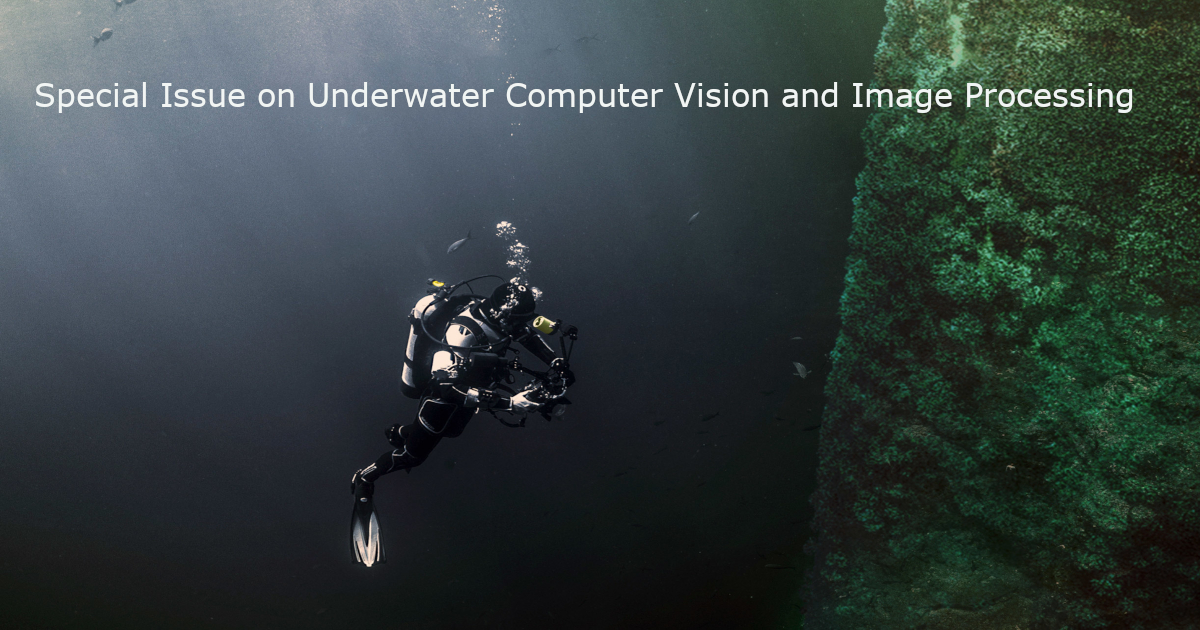Underwater Computer Vision and Image Processing
A special issue of Journal of Marine Science and Engineering (ISSN 2077-1312). This special issue belongs to the section "Ocean Engineering".
Deadline for manuscript submissions: closed (5 August 2021) | Viewed by 44181

Special Issue Editors
Interests: computer vision; machine learning; image and video processing; pattern recognition; underwater imaging; structural inspection
Interests: vibration; energy harvesting; structural health monitoring and control; smart materials and structures; dynamical systems; risk quantification and reliability analysis
Special Issues, Collections and Topics in MDPI journals
Special Issue Information
Dear Colleagues,
The development of new and improved underwater computer vision and image processing techniques is important, as it helps us to maximize the level of useful information that we can extract from underwater scenes. There are many important applications in both emerging and established fields such as autonomous underwater vehicle navigation, archaeological surveys, seafloor mapping, offshore inspections, and biological monitoring. The ability of computer vision algorithms to effectively interpret underwater visual data is often limited by the poor visibility conditions. Therefore, there is an emphasis on devising innovative solutions that can perform well when applied to imagery captured under challenging environmental conditions.
We invite you to submit your latest research in the area of underwater computer vision and image processing algorithms to this Special Issue. High-quality papers are solicited to deal with topics that include, but are not limited to, the following areas of research:
- Image enhancement and restoration;
- Scene reconstruction, 3D imaging, and SLAM;
- Underwater photogrammetry;
- Sensor and data fusion in underwater applications;
- Underwater data acquisition systems;
- Object detection, classification, and identification;
- Deep-learning-based methods for underwater applications;
- Tracking and motion analysis;
- Virtual and augmented reality for underwater applications;
- Innovative applications and multidisciplinary approaches in underwater imaging.
Dr. Michael O’Byrne
Prof. Vikram Pakrashi
Prof. Bidisha Ghosh
Guest Editors
Manuscript Submission Information
Manuscripts should be submitted online at www.mdpi.com by registering and logging in to this website. Once you are registered, click here to go to the submission form. Manuscripts can be submitted until the deadline. All submissions that pass pre-check are peer-reviewed. Accepted papers will be published continuously in the journal (as soon as accepted) and will be listed together on the special issue website. Research articles, review articles as well as short communications are invited. For planned papers, a title and short abstract (about 250 words) can be sent to the Editorial Office for assessment.
Submitted manuscripts should not have been published previously, nor be under consideration for publication elsewhere (except conference proceedings papers). All manuscripts are thoroughly refereed through a single-blind peer-review process. A guide for authors and other relevant information for submission of manuscripts is available on the Instructions for Authors page. Journal of Marine Science and Engineering is an international peer-reviewed open access semimonthly journal published by MDPI.
Please visit the Instructions for Authors page before submitting a manuscript. The Article Processing Charge (APC) for publication in this open access journal is 2600 CHF (Swiss Francs). Submitted papers should be well formatted and use good English. Authors may use MDPI's English editing service prior to publication or during author revisions.
Keywords
- underwater imaging
- computer vision
- image enhancement
- underwater photogrammetry
- 3D reconstruction
- underwater data acquisition
Benefits of Publishing in a Special Issue
- Ease of navigation: Grouping papers by topic helps scholars navigate broad scope journals more efficiently.
- Greater discoverability: Special Issues support the reach and impact of scientific research. Articles in Special Issues are more discoverable and cited more frequently.
- Expansion of research network: Special Issues facilitate connections among authors, fostering scientific collaborations.
- External promotion: Articles in Special Issues are often promoted through the journal's social media, increasing their visibility.
- Reprint: MDPI Books provides the opportunity to republish successful Special Issues in book format, both online and in print.
Further information on MDPI's Special Issue policies can be found here.







